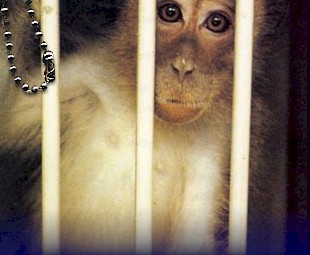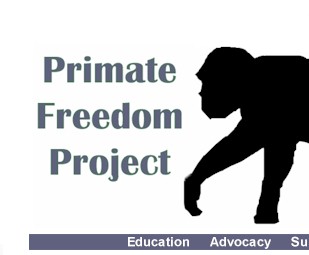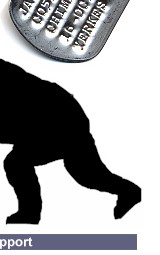The National
Institute of Child Health and Human Development
From its web site,
The National Institute of Child Health and Human Development
is part of the National Institutes of Health, U.S. Department of
Health and Human Services. The NICHD conducts and supports
laboratory, clinical and epidemiological research on the reproductive,
neurobiologic, developmental, and behavioral processes that
determine and maintain the health of children, adults, families
and populations.
Mission Statement
The National Institute of Child Health and Human Development
(NICHD) seeks to assure that every individual is born healthy, is
born wanted, and has the opportunity to fulfill his or her
potential for a healthy and productive life unhampered by disease
or disability.
Someone visiting the NICHD
web page would probably go away thinking that this NIH agency
is working on ways to improve the health of children. And to an
extent, such an impression would be justified. Undoubtedly, there
are many caring scientists funded by NICHD who are working long
hours in honorable and compassionate endeavors. But, if you look
a bit deeper you find this part of the NICHD web page:
Outside Inquires
Into Your Animal Research
If you receive any inquires from Animal Welfare/Rights Organizations,
the press, radio, television, or members of Congress, take their
name(s) and telephone number and call the NICHD Office of Research
Reporting (ORR) at 496-5133.
DO NOT provide any information before contacting ORR.
[NICHD's emphasis.]
What could scientists associated with NICHD be up to that would
make the agency worry about explaining how they are using animals?
It is clear that scientists are justified when they give guarded
answers to inquires from Animal Welfare/Rights Organizations, and,
maybe, some media queries might bear a little careful planning before
making a statement, but members of Congress?
What could scientists associated with NICHD be up to that would
make the agency worry about explaining how they are using animals
to members of Congress?
NICHD's intramural research is organized into four units. One of
these is named the Laboratory of Comparative Ethology. It is under
the direction of Stephen Suomi.
The American Heritage Dictionary defines ethology as the scientific
study of animal behavior, usually as it occurs in a natural environment.
The second definition given is 'the study of human ethos and its
formation'.
Stephen Suomi was a graduate student at the University of Wisconsin;
his teacher was Harry S. Harlow. The University of Wisconsin says,
"Harlow's name is bonded to experiments that might be questionable
today." You can sometimes hear members of the primate experimentation
community say that Harlow's work is an artifact of bygone days when
there were fewer safeguards in place. Today, strict oversight would
not allow such clear cruelty to receive public funding.
Harry Harlow's experiments started out being only typically cruel.
He discovered that an infant rhesus monkey will cling to a soft
mannequin monkey rather than to a wire mannequin monkey even when
the wire mannequin supplies the baby with milk. But Harlow's genius
was that he could push the questions always further. His work would
have been impossible without a supportive university willing to
pay for his investigations. Harry and his students designed a variety
of monkey mannequins. One was equipped with metal spines that could
be quickly ejected and retracted. When an infant was clinging to
its surrogate mother the scientists would eject the spines and the
infant would be painfully pushed away from its "mother".
They discovered that when the spines were withdrawn the baby would
return and cling again. Another mannequin was designed with a series
of tubes under the cloth covering that ice water could be circulated
through. Again the baby was repelled by the "mother's"
rejection but returned to cling again when the "mother"
returned to normal.
In Harlow's darkest experiments he placed infants in V-shaped stainless
steel boxes he termed the "wells of despair." When locked
in these small vaults the infants were unable to see any other living
creature including the person who replenished their food and water.
And then he left the monkeys in these boxes for up to two years.
After they were removed from these prisons Harlow "discovered"
that they had few social skills and seemed unable to interact with
more normal monkeys. Harlow then impregnated some of these socially
and emotionally crippled monkeys. When their babies were born Harlow
documented all the many ways they killed their own children.
And this was the environment which nurtured Stephen Suomi, Head
of the NICHD Laboratory of Comparative Ethology.
The introduction to his federally funded lab's web site says:
Research in this Laboratory is focused on behavioral, cognitive,
and physiological development in humans and in nonhuman primates.
The interactions of both genetic and environmental factors are explored
in a comparative approach so as to determine the origins, ontogeny,
and outcomes of various behavioral phenotypes.
Results of experimental studies in nonhuman primates are correlated
with the results of longitudinal studies in human infants and their
families, as well as with data obtained by physiological and molecular
neuroscience techniques. Longitudinal designs are employed to address
issues of developmental continuity and change; behavioral and physiological
measures in support of multiple levels of analysis are carried out
concomitantly.
So what's actually going on? The lab's web page says, The neuroanatomical,
psychophysiological, and neurochemical concomitants of various behavioral
phenotypes are tracked developmentally from birth through
senescence in various rearing environments, including free-ranging
outdoor settings. And there is nothing on the web page to suggest
much else. Many scientists work in Suomi's lab. What follows is
a brief survey of work they are involved in. It is important to
keep in mind that this represents the part of their work they are
willing to make public.
Suomi and Kathlyn Rasmussen, a member of his lab, recently presented
a paper titled "Social Separation in Infant Cebus Apella: Patterns
of Behavioral and Cortisol Response in which they describe the effects
of separating infant capuchins from their mothers. They published
another titled "Heart Rate Patterns in Rhesus Monkeys with
Self-Injurious Behavior (SIB): Are These Monkeys "High Reactors?"
in which isolated monkeys were intentionally frightened by someone
with a net.
Monica Carosi works in Suomi's lab. She recently coauthored the
paper "The Occurrence of a Bone-Like Structure in the Clitoris
of Female Tufted Capuchins (Cebus Apella)," in which she noted
that manually feeling for this structure is a better test than an
x-ray.
Thomas Tsai and Maribeth Champoux also work with Suomi. They just
presented "Early Social Rearing Environment Influences Acquisition
of a Computerized Joystick Task in Rhesus Monkeys (Rhesus Macaque),
and reported that [t]he long-lasting deleterious effects of early
parental deprivation on rhesus monkeys' social and maternal behavior,
physiology, and alcohol consumption are well-documented. By contrast,
there is little evidence of the effect of early social rearing history
on learning and cognition.
When lab claims that, various behavioral phenotypes are
tracked developmentally from birth through senescence in various
rearing environments, including free-ranging outdoor settings, it
appears to be intentionally misleading. More accurately, for those
involved in policy-making decisions such as Congresspersons, they
shoul have said, ... including socially and envioronmentally
deprived and stress-inducing settings.
Maribeth Champoux joined up with other Suomi lab researchers M.
Purple, Rebecca Homer and Courtney Shannon-Lindell to write "Lack
of Effect of Dietary DHA Supplementation on Behavioral Switches
in Nursery-Reared Infant Rhesus Macaques." They say that some
human children with attention deficit/hyperactivity disorder have
low levels of the chemical DHA in their blood. So they fed
some of the baby monkeys a normal diet, and some a diet high
in DHA. They report that nothing seemed to happen.
Champoux, Homer, Shannon-Lindell, Purple and another lab member,
K. Zajicek presented "The Impact of N-3 Fatty Acid Supplementation
During Infancy on Later Social Behavior." They say that, Long
chain essential fatty acids are . . . typically abundant in primate
breast milk, and relatively deficient in standard infant formulas.
It is unknown whether an infant diet low in long chain essential
fatty acids has an effect on later behavior." They tested
this question using 28 baby monkeys.
J. Dee Higley joined with lab members Rebecca Homer and Courtney
Shannon-Lindell to present "CNS Monoamine Matabolites and Plasma
Hormones as Predictors of Alcohol Consumption in Rhesus Macaques."
They injected alcohol intravenously into 115 juvenile monkeys.
What would they say to a Congressperson's inquiry about this use
of tax money?
Peggy O'Neill Wagner, another lab member, reported that vasectomized
males in dominant positions in group housing continue to form consorts.
Lab members Thomas Tsai, Peter J. Pierre and J. Dee Higley wrote
about monkeys being more fearful of a black plastic box than of
a clear plastic box.
Kathlyn Rasmussen, of Suomi's lab, presented a paper in cooperation
with scientists from Harvard's primate center titled "Reaction
of Rhesus Monkeys with Self-Injurious Behavior to Heart Rate Testing:
Is Biting a Coping Strategy?" They placed vests on monkeys
known to bite themselves when placed in a vest and recorded their
heart rates before, during, and after they bit themselves.
Gregory C. Westergaard, Liv Chanya, of Suomi's lab, and Suomi presented
a paper on the willingness of capuchins to engage in barter, exchanging
less desirable items for ones deemed to be of greater value.
[Studies referred to above are from the American Journal of Primatology,
vol. 49, no. 1, 1999.]
Looking at these studies one is left still wondering what is being
done at the National Institute of Child Health and Human Development
that is so grotesque that it should be carefully packaged prior
to disclosure to even a member of Congress. If they are willing
to tell publicly about frightening young monkeys, what is it they
wish to keep quiet about? Apparently, not even Congress will ever
know for sure. Perhaps, its simply the fact that little of this
has anything to do with human child health or human development.
Suomi, Westergaard, M.K. Izard, J.H. Drake, and J. Dee Higley published
"Rhesus Macaque (Macaca mulata) Group Formation and Housing:
Wounding and Reproduction in a Specific Pathogen Free (SPF) Colony"
in 1999. They report that, when forming groups of monkeys, slow
incremental additions to the group, with barriers that they are
able to hide behind, results in less wounding than throwing a bunch
of monkeys together in a single day, willy-nilly. This is particularly
troubling because the most basic understanding of rhesus husbandry
is their propensity to fight to establish dominance hierarchies.
Forming a group all at once is unethical and malfeasant, yet this
was part of this Suomi experiment.
In 1998, Suomi, along with other scientists at his lab wrote "Rearing
Condition and Plasma Cortisol in Rhesus Monkey Infants" in
which he continued to document the results of being raised in isolation.
In 1997 Suomi coauthored "Behavioral and Physiological Characteristics
of Indian and Chinese-Indian Hybrid Rhesus Macaque Infants"
which documented the effects of 4 weeks of the repetitive social-separation...
Suomi has been experimenting and publishing continually since at
least 1970 when he published "Effect of Repetitive Infant-Infant
Separation of Young Monkeys."
[Journal of Abnormal Psychology. 1970 Oct;76(2):161-72.]
For 30 years Suomi has been experimenting on baby monkeys. His reward
has been the directorship of the publicly funded National Institute
of Child Health and Human Development's Laboratory
of Comparative Ethology.
If you receive any inquires from Animal Welfare/Rights Organizations,
the press, radio, television, or members of Congress, take their
name(s) and telephone number and call the NICHD Office of Research
Reporting (ORR) at 496-5133. DO NOT provide any information
before contacting ORR.
NICHD
Rick Bogle, 1999
Home Page | Our Mission | News
What Are Primate Freedom
Tags | Order Tag
Primate Research
Centers | Resources
|






